Designing Bespoke Play Environments for SEN Schools: A Path to Holistic Development
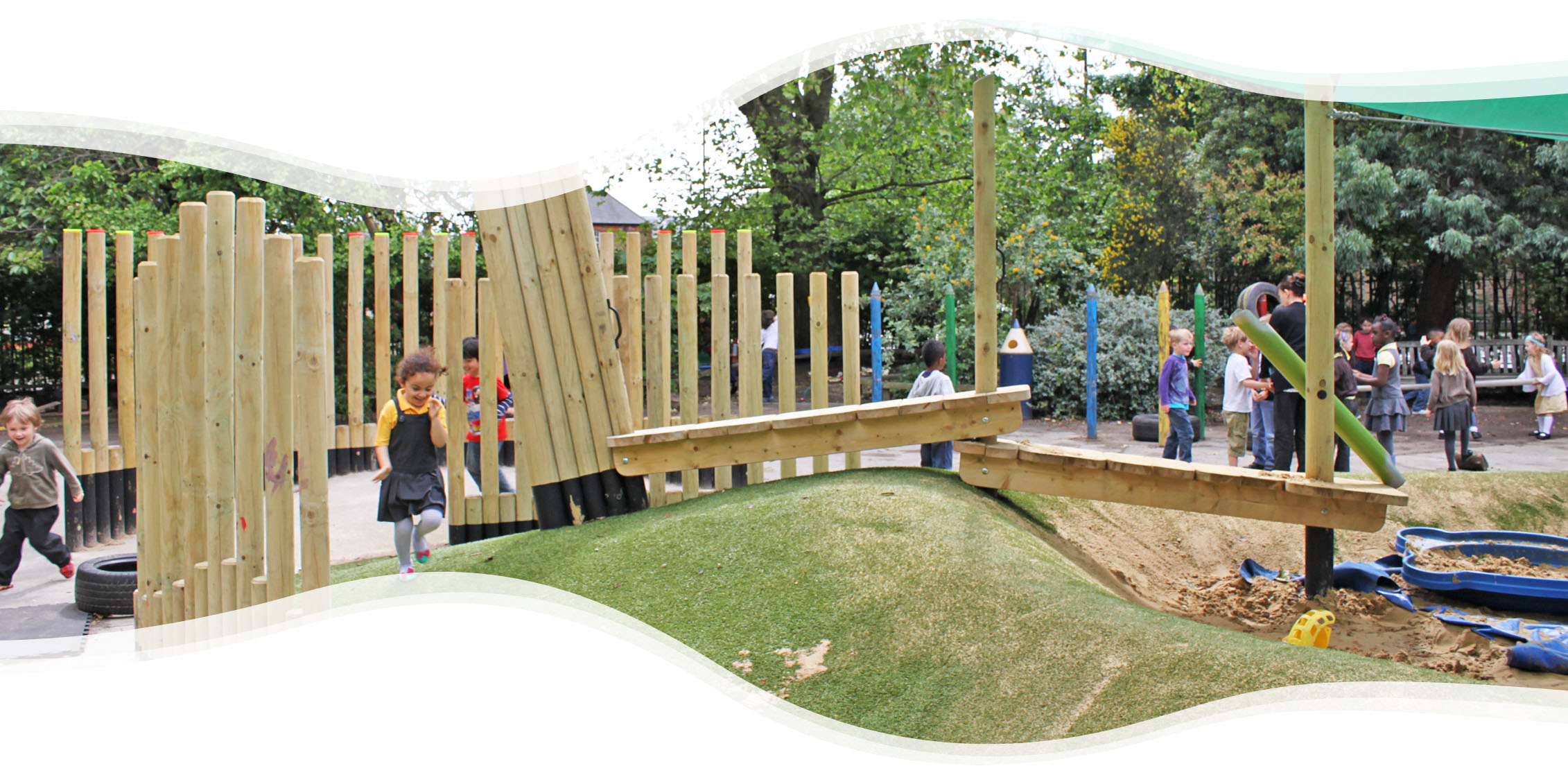
In the realm of educational spaces, creating play environments tailored to the unique needs of SEN (Special Educational Needs) schools stands as an essential endeavour. While designing play areas always presents challenges and the need for innovative solutions, it becomes even more crucial for institutions that provide specialized educational support.
The fundamental question arises: “How can we craft spaces specifically catered to children with special needs?” To answer this, we delve into a holistic approach, ensuring that each facet of the playground serves a purpose in the development and well-being of these remarkable individuals.
Considerations for Creating Bespoke SEN School Play Environments:
1. Holistic Design
Creating a playground environment tailored to the unique needs of SEN schools goes beyond mere aesthetics. It hinges on a holistic approach that considers the intricate facets of a child’s development. This holistic design approach focuses on four key areas:
- Physical Development:
The physical aspect of a child’s development is paramount. The playground should provide opportunities for physical activities that cater to a wide range of abilities. This includes not only the accessibility of play equipment but also the layout of pathways, ramps, and open spaces that facilitate safe movement. Activities that promote gross and fine motor skills, strength, balance, and coordination should be seamlessly integrated into the design. - Cognitive Stimulation:
The playground serves as an extension of the classroom, offering opportunities for cognitive development through play. Educational elements such as puzzles, interactive games, and storytelling areas can be strategically incorporated. These encourage problem-solving, creativity, and critical thinking, fostering cognitive growth in an engaging manner. - Emotional Well-being:
Emotional development is a crucial aspect of a child’s overall growth. The playground should include spaces that nurture emotional well-being. Quiet zones provide a retreat for students who may become overwhelmed, offering a space for self-regulation and emotional expression. Moreover, the design should promote a sense of inclusivity, belonging, and emotional safety, enabling students to build positive relationships with peers and adults. - Sensory Engagement:
Sensory play is essential in a holistic playground design. It caters to the sensory needs of children with conditions like autism and enhances sensory processing for all students. The inclusion of sensory gardens, textured surfaces, and interactive elements that stimulate the five senses (touch, sight, scent, taste, and hearing) creates a rich sensory experience. These elements not only support sensory development but also contribute to overall cognitive and emotional growth.
In essence, a holistic design approach means that every element within the space is carefully considered and purposefully integrated to address these four dimensions of development. It ensures that the playground transcends being a mere recreational area and becomes an extension of the learning environment, where children can grow physically, cognitively, emotionally, and sensorily while having fun. Such a playground becomes an asset in supporting the diverse needs of SEN students and promoting their overall well-being.
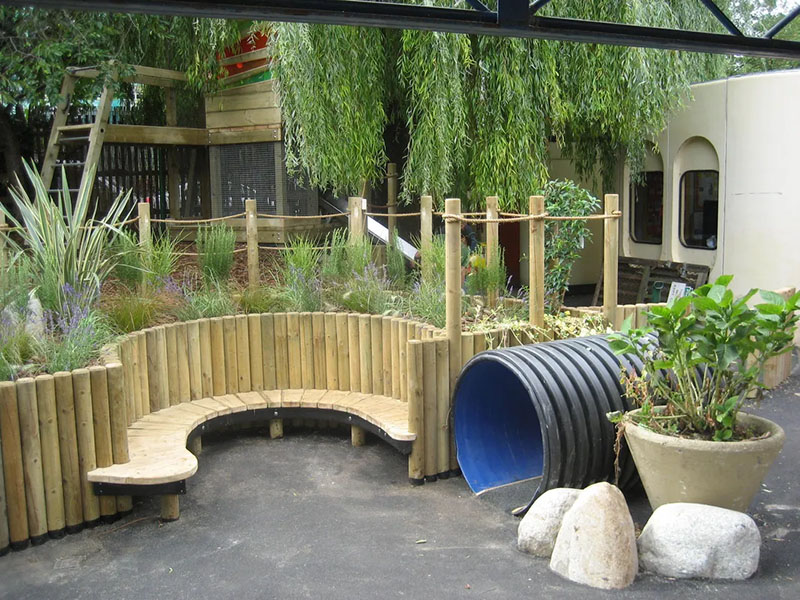
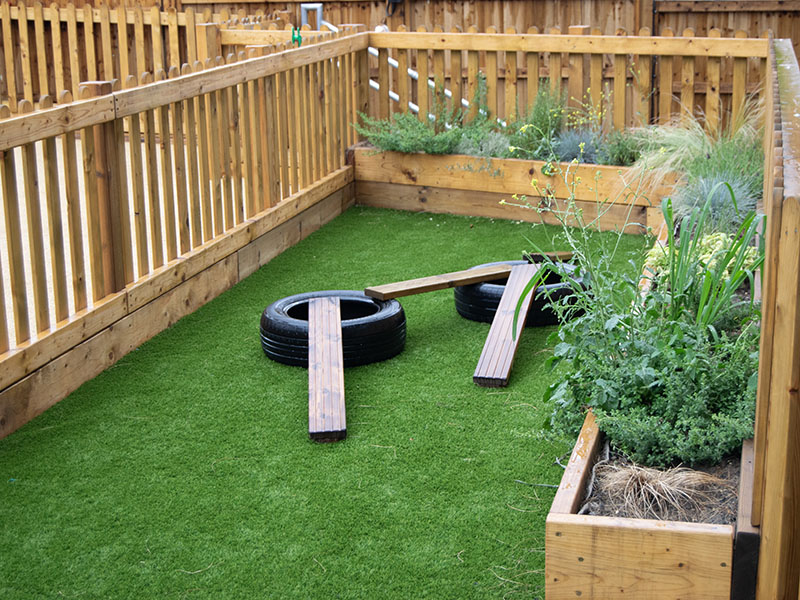
2. Green Spaces with Canopies
Integrating lush green spaces within the playground, complemented by thoughtfully designed canopies, transforms the environment into a haven of natural beauty and tranquillity. This combination serves several vital purposes:
- Sensory Engagement:
Green spaces, adorned with a variety of plants and foliage, create a multisensory experience for students. The sight of vibrant colours, the scent of blooming flowers, and the gentle rustling of leaves in the wind stimulate the senses, enhancing sensory engagement. For SEN students, who may benefit significantly from sensory experiences, these green areas offer a sensory-rich environment that supports their development. - Exploration and Discovery:
Nature-inspired settings encourage exploration and discovery. Children can interact with the natural world, observing insects, birds, and the ever-changing seasons. These experiences foster curiosity and a deeper connection to the environment. It’s an outdoor classroom where students can learn about the world around them in a hands-on, experiential manner. - Calm Retreat:
The presence of canopies within these green spaces provides a sheltered retreat when students require a break from the hustle and bustle of the playground. These quiet zones offer a serene, haven where students can regroup, self-soothe, or simply enjoy a moment of solitude. For children who may become overwhelmed or overstimulated, these calm retreats are invaluable. - Connection to Nature:
Green spaces with canopies promote a profound connection to nature. This connection has been shown to have a positive impact on mental and emotional well-being. It instils a sense of stewardship for the environment and encourages responsible behaviour towards it. This connection to nature can also extend beyond the playground and into students’ lives outside of school. - Enhanced Learning:
Outdoor classrooms under canopies provide an inspiring environment for learning. Lessons can be conducted amidst nature, fostering a love for learning and exploration. Research has shown that exposure to natural settings enhances concentration, creativity, and academic performance, making these areas a valuable educational resource.
In essence, green spaces with canopies are not just about aesthetics; they are a dynamic and multifaceted element of a holistic playground design. They offer sensory stimulation, opportunities for exploration and learning, and a refuge for students when needed. These spaces foster a deep connection to the natural world, nurturing both the physical and emotional well-being of SEN students and enhancing their overall educational experience.
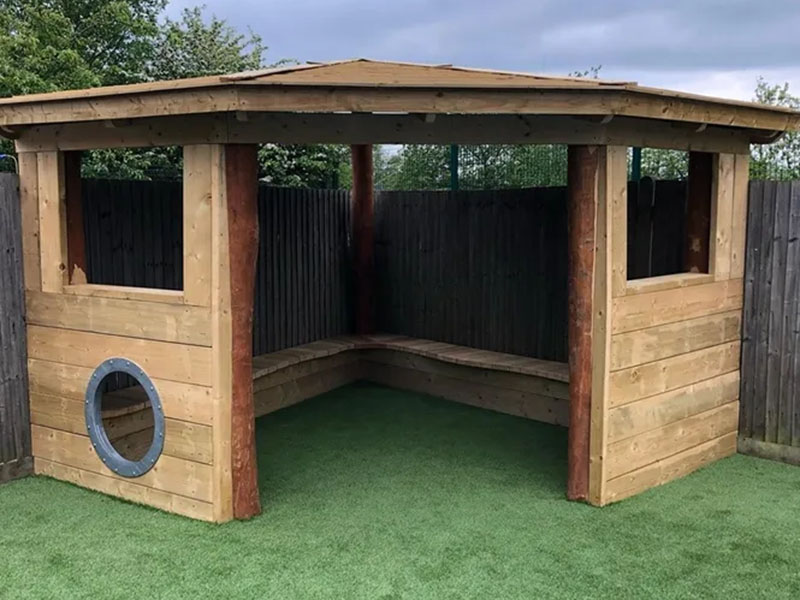
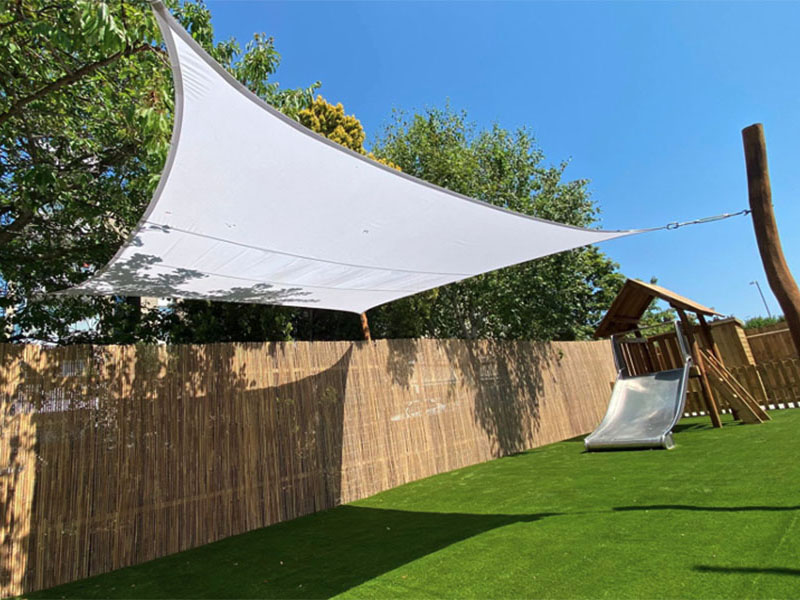
3. Quiet Zones
In the bustling and often dynamic environment of a playground, the inclusion of designated Quiet Zones plays a pivotal role in ensuring the well-being and comfort of SEN students. Here’s why these spaces are indispensable:
- Decompression and Relaxation:
Quiet Zones provide a sanctuary where children can decompress and relax amidst the sensory richness of the playground. These areas are thoughtfully designed to minimize sensory overload, offering a serene environment where students can momentarily retreat from the stimulating activities around them. - Therapeutic Environments:
For many SEN students, sensory experiences can be overwhelming. Quiet Zones are intentionally therapeutic in nature, featuring elements like soft seating, calming colours, and gentle lighting. These elements create a soothing atmosphere that supports emotional regulation and reduces anxiety. - Respite from Overwhelm:
Some children may encounter moments of sensory overload or heightened emotional states during play. Quiet Zones offer a safe space for them to retreat to when they need a break. It’s a place where they can self-regulate, practice mindfulness, or engage in calming activities with the guidance of staff or peers. - Sensory-Friendly Design:
Quiet Zones are designed with sensory sensitivity in mind. Sound-absorbing materials, tactile surfaces, and low-stimulation environments ensure that these spaces are conducive to sensory comfort. They cater to children with sensory processing difficulties, providing a haven where sensory triggers are minimized. - Individualized Support:
The beauty of Quiet Zones lies in their flexibility. They can be tailored to meet the individual needs of each child. Some students may require complete solitude, while others may benefit from gentle guidance or sensory tools. Educators and support staff can use Quiet Zones as a resource for individualized support and intervention. - Promoting Social and Emotional Growth:
Quiet Zones also serve as spaces where students can engage in social and emotional learning. Trained staff can work with children in these areas to facilitate emotional expression, conflict resolution, or simply provide a safe space for communication.
In summary, Quiet Zones are essential components of a holistic playground design, offering students a refuge for decompression, relaxation, and emotional regulation. These therapeutic environments are designed with sensory sensitivity in mind, providing respite for SEN students who may experience sensory overload or heightened emotional states during play. Quiet Zones are versatile and individualized, supporting the diverse needs of students and promoting their social and emotional growth.
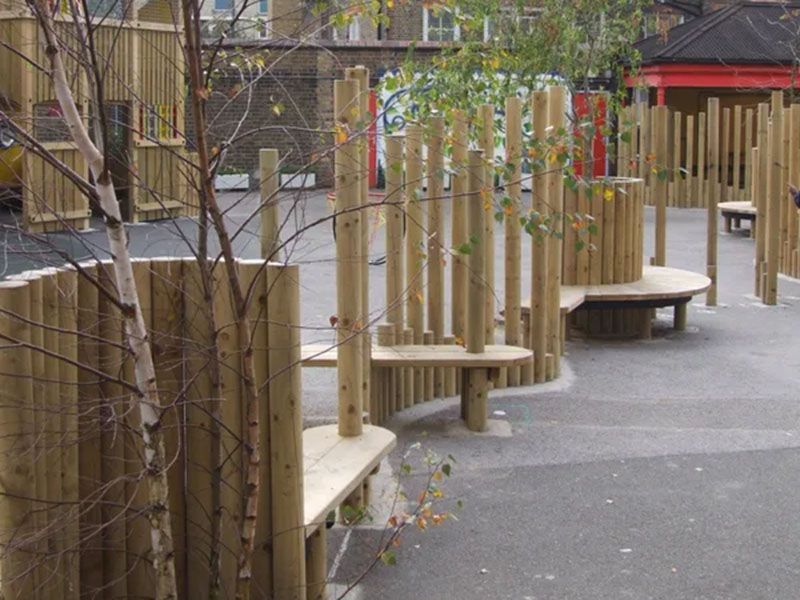
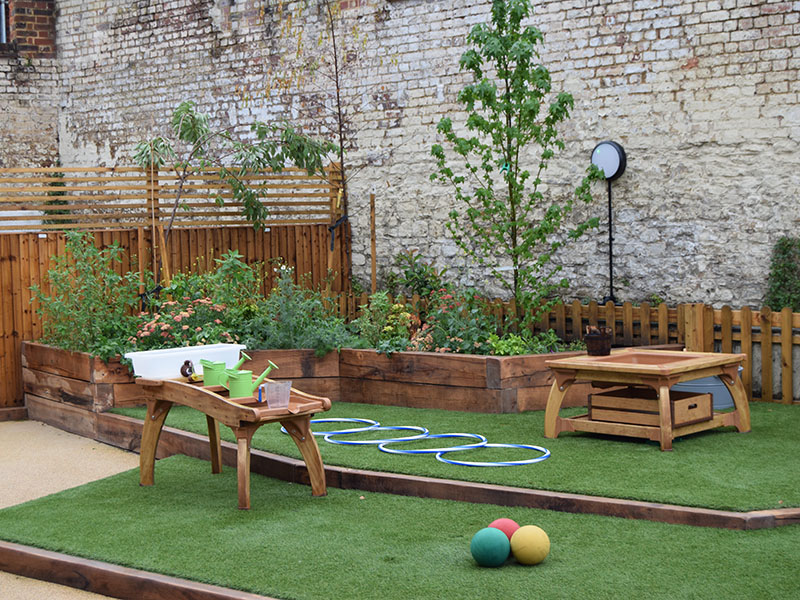
4. Accessible Play Equipment
The inclusion of accessible play equipment within the playground is a fundamental aspect of creating an inclusive environment that caters to children of all abilities. Here’s why it is pivotal:
- Universal Participation:
Accessible play equipment is thoughtfully designed to ensure that every child, regardless of their physical abilities or limitations, can actively participate in play. It breaks down barriers and eliminates exclusion, fostering a sense of belonging among all students. - Promoting Social Interaction:
Play is not just about physical activity; it’s a medium for social interaction and cooperation. Accessible equipment allows children with diverse abilities to engage together, promoting social bonds and friendships. These interactions contribute to the development of empathy, cooperation, and teamwork. - Physical Development:
Inclusivity extends beyond social interaction; it encompasses physical development as well. Accessible equipment provides opportunities for children to build their motor skills, strength, balance, and coordination. It allows them to explore their physical potential in a safe and supportive environment. - Enhancing Confidence:
When children of all abilities can actively participate in play, it enhances their confidence and self-esteem. They experience success, learn new skills, and develop a positive self-image. This newfound confidence can extend to other aspects of their lives, including academics and social interactions. - Fostering Independence:
Accessible play equipment empowers children to explore and engage independently. It encourages them to take the initiative, make choices, and assert their autonomy. This fosters a sense of independence and self-reliance that is invaluable for their overall development. - Educational Opportunities:
Play equipment can be designed to offer educational opportunities. Incorporating elements that stimulate curiosity, problem-solving, and creativity enriches the learning experience. Accessible equipment can be part of the educational toolbox, helping students grasp important concepts through hands-on exploration. - Parent and Peer Engagement:
Inclusive play equipment also promotes engagement among parents and peers. It provides an environment where parents can actively participate in play with their children, strengthening family bonds. Additionally, it encourages peers to support and include their friends with diverse abilities, promoting empathy and understanding. - Community Building:
Inclusion extends beyond the school walls. Accessible play equipment in the school playground sends a powerful message of inclusivity to the broader community. It showcases the school’s commitment to diversity and serves as a model for inclusive practices in other public spaces.
In conclusion, accessible play equipment is a cornerstone of an inclusive playground design. It goes beyond physical accessibility; it promotes social interaction, physical development, confidence, and independence among children of all abilities. Additionally, it creates opportunities for educational engagement, strengthens family bonds, and fosters a sense of community inclusivity. By ensuring that every child can actively participate, we not only create an inclusive playground but also a more inclusive society.
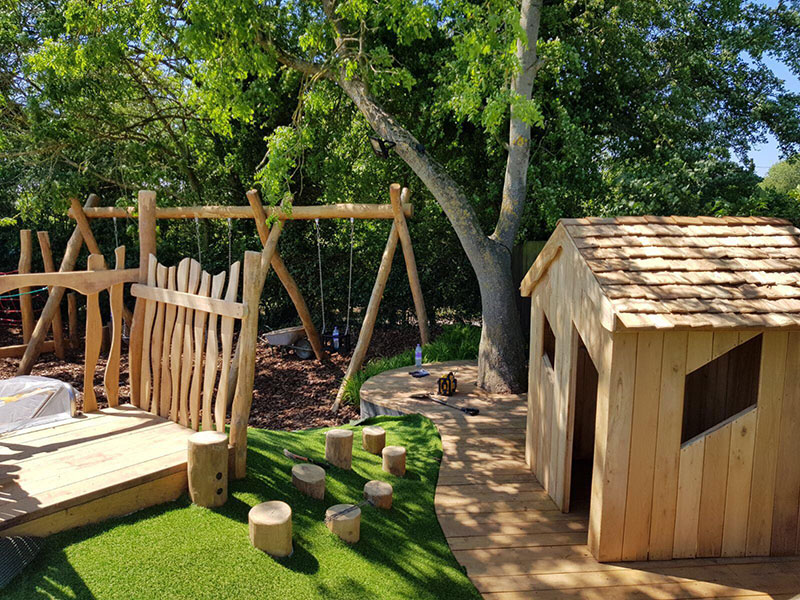
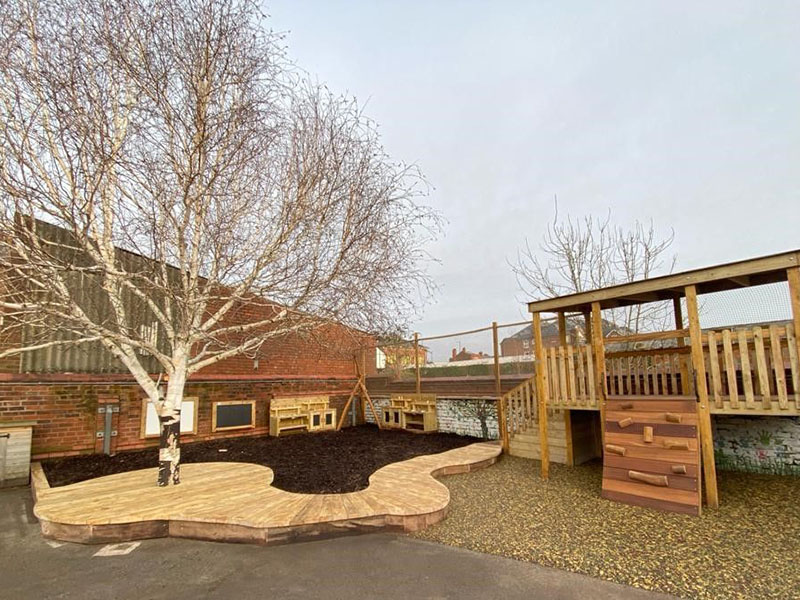
5. Sensory Gardens
Sensory gardens are captivating and immersive spaces within the playground that offer not only recreational delight but also rich educational experiences. Here’s why they are cherished components of an inclusive playground:
- Multisensory Engagement:
Sensory gardens are meticulously designed to engage all five senses – touch, sight, scent, taste, and hearing. This comprehensive sensory stimulation provides a holistic experience that encourages sensory exploration and learning. Children can touch textured surfaces, observe vibrant colours, savour the aroma of fragrant plants, taste edible elements, and listen to the soothing sounds of nature. - Educational Treasure Troves:
These gardens are educational treasure troves. Each element is carefully chosen to facilitate learning and discovery. For instance, the presence of bamboo offers the gentle rustling of leaves in the wind, teaching children about the sense of hearing. Lavender and various aromatic herbs educate them about scent, while textured surfaces like bark and steppingstones nurture the sense of touch. - Sensory Processing Support:
Sensory gardens are particularly beneficial for children with sensory processing difficulties, such as those with autism or sensory sensitivities. These spaces provide a safe and controlled environment for them to explore and adapt to sensory experiences. The gradual exposure helps desensitize children and improves their ability to process sensory information in everyday life. - Cognitive and Emotional Growth:
Sensory gardens promote cognitive and emotional growth. The act of exploring and interacting with the environment fosters curiosity, problem-solving skills, and creativity. Additionally, the calming and therapeutic nature of sensory gardens contributes to emotional well-being, reducing stress and anxiety. - Community Building:
Sensory gardens can also serve as spaces for community building. They provide opportunities for students, parents, and educators to come together and share sensory experiences. Collaborative activities like planting and tending to the garden foster a sense of community, where everyone plays a role in creating and maintaining the sensory haven. - Meditative Retreat:
Beyond educational and recreational value, sensory gardens offer a meditative retreat. They provide a tranquil space where students can practice mindfulness, meditation, and reflection. It’s a sanctuary within the playground where children can find solace and inner peace when needed. - Promoting Inclusivity:
Sensory gardens are inherently inclusive spaces. They cater to children of all abilities, offering a sensory-rich experience that transcends physical limitations. In these gardens, every child can explore, learn, and appreciate the wonders of the natural world.
In summary, sensory gardens are vibrant and educational oases within the playground. They engage all five senses, providing a comprehensive sensory experience that encourages learning, cognitive growth, and emotional well-being. These gardens are not only therapeutic but also promote inclusivity, community building, and a deeper connection to nature. They are spaces where children can discover the beauty of the sensory world, fostering holistic development and enriching their lives in countless ways.
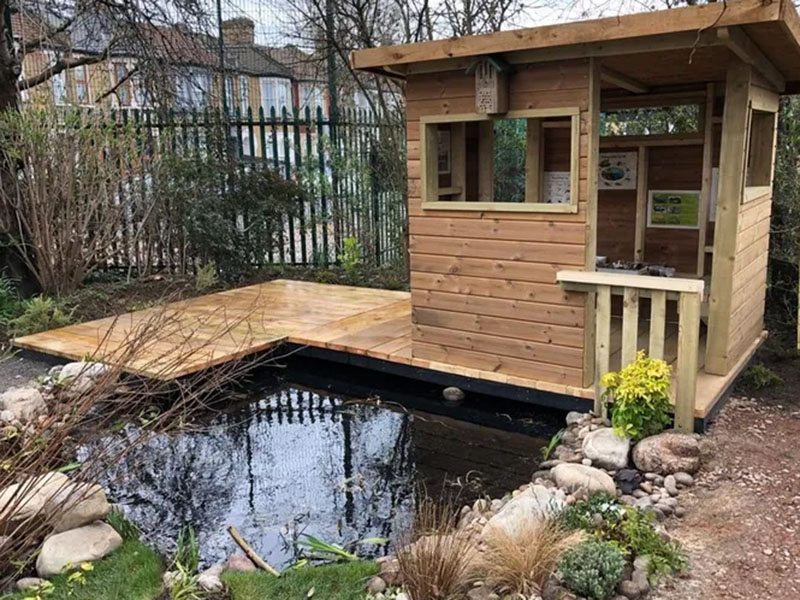
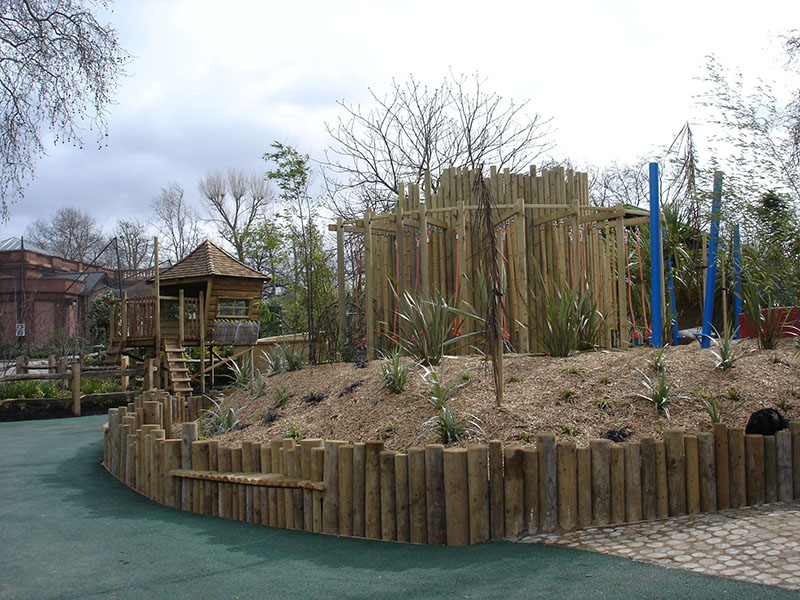
6. Social Play Spaces
Socialization is a vital aspect of a child’s development, and the playground offers an ideal setting for fostering social interactions. Social play spaces are carefully designed to encourage children to come together, build connections, and learn valuable social skills. Here’s why these spaces are integral to an inclusive playground:
- Relaxed, Pressure-Free Interaction:
Social play spaces, such as sandpits, create an atmosphere of relaxed and pressure-free interaction. Children can engage with one another in a non-competitive environment, reducing stress and anxiety associated with social interactions. This relaxed atmosphere fosters cooperation and friendships. - Collaborative Learning:
Play is not just about fun; it’s also a powerful tool for learning. Social play spaces promote collaborative learning, where children work together to achieve common goals. In a sandpit, for example, they can build sandcastles, dig moats, and create imaginative worlds, honing their teamwork and problem-solving skills. - Inclusive Play:
Inclusive play equipment, like musical instruments, offers avenues for social interaction that are both enjoyable and inclusive. Musical instruments invite children of all abilities to participate in creating sounds and rhythms together. This cooperative music-making enhances a sense of togetherness and belonging. - Language Development:
Social play spaces are rich environments for language development. Children engage in conversations, negotiations, and storytelling as they play together. These interactions enhance their vocabulary, communication skills, and understanding of social cues. - Empathy and Cooperation:
Interacting with peers in social play spaces promotes the development of empathy and cooperation. Children learn to consider the feelings and perspectives of others, share, take turns, and resolve conflicts constructively. These essential social skills lay the foundation for positive relationships in the future. - Inclusivity and Diversity:
Social play spaces foster inclusivity and celebrate diversity. They create an environment where children of different backgrounds, abilities, and interests can come together. This diversity enriches social interactions, broadens perspectives, and encourages acceptance of differences. - Positive Emotional Experiences:
Positive social interactions in these spaces contribute to emotional well-being. Friendships formed in social play areas can lead to feelings of happiness, belonging, and reduced stress. These positive emotional experiences have a lasting impact on a child’s overall development. - Conflict Resolution:
Social play also provides opportunities for children to practice conflict resolution. In a safe and supervised environment, they learn how to express their feelings, negotiate, and find solutions to disagreements. These conflict resolution skills are invaluable in all aspects of life.
In summary, social play spaces are dynamic hubs within the playground that foster socialization, cooperation, and skill development. They provide a relaxed, pressure-free environment for children to interact, learn, and grow together. These spaces promote inclusivity, diversity, and positive emotional experiences, shaping well-rounded individuals who are equipped with the social skills needed for successful relationships and interactions in the world beyond the playground.
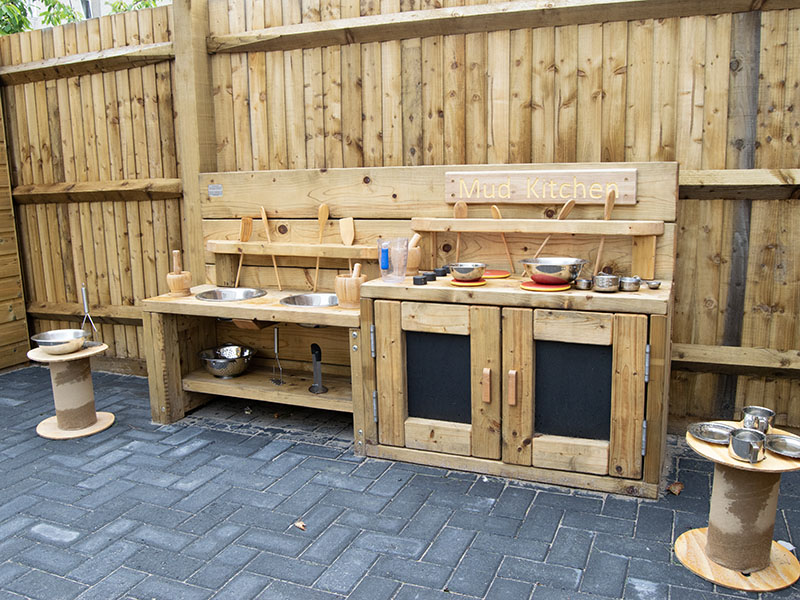
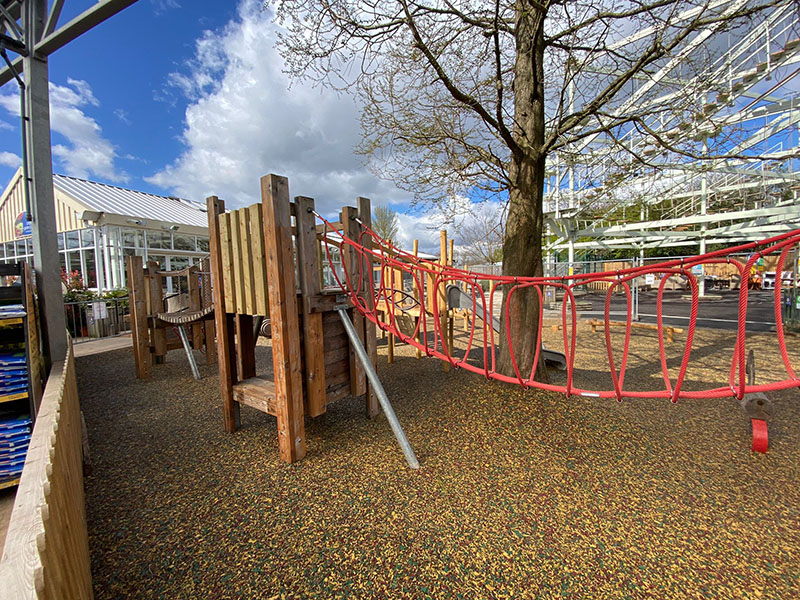
7. Multi-sensory Equipment
Multi-sensory equipment stands as a cornerstone of an inclusive playground, offering a wide array of benefits that cater to the diverse needs of children. Here’s why this equipment is indispensable:
- Enhancing Concentration:
Multi-sensory equipment engages multiple senses simultaneously, which has a positive impact on concentration and focus. Children are naturally drawn to activities that stimulate their senses, and these experiences promote sustained attention and active engagement. - Behavioural Improvements:
Multi-sensory play has been proven to have a calming effect on children. Activities such as swinging, spinning, or rocking on sensory equipment help regulate sensory processing, reduce anxiety, and improve behaviour. These calming experiences can be especially beneficial for children with sensory sensitivities or challenging behaviours. - Mental Health and Well-being:
Engaging with multi-sensory equipment contributes to overall mental health and well-being. It provides a means for children to release stress, anxiety, and pent-up energy in a safe and enjoyable manner. This release of endorphins during sensory play enhances their emotional state. - Energy Regulation:
Some children, particularly those with conditions like Autism or ADHD, struggle with regulating their energy levels. Multi-sensory equipment, such as trampolines, offers an effective means of energy regulation. The repetitive movements of jumping and bouncing soothe restless minds, improve balance, and reduce excess energy, helping children feel more grounded and ready to focus. - Motor Skill Development:
Multi-sensory equipment is instrumental in developing motor skills. Activities like swinging or climbing on sensory structures challenge children’s balance, coordination, and spatial awareness. These physical challenges contribute to the development of gross motor skills, essential for everyday activities and physical fitness. - Vestibular System Strengthening:
Sensory equipment that involves motion, such as swings and spinning devices, helps strengthen the vestibular system. A well-developed vestibular system supports balance, posture, and coordination. It also aids in spatial orientation and the ability to navigate one’s surroundings confidently. - Deep Pressure Therapy:
Sensory swings that allow a child to sit within a fabric cocoon provide deep pressure therapy. This gentle, embracing sensation has a calming effect on the nervous system and is particularly beneficial for children who seek sensory input or require assistance in self-regulation. - Inclusive Play:
Multi-sensory equipment is inherently inclusive. It caters to children of all abilities, providing opportunities for play and exploration that transcend physical limitations. This inclusivity fosters a sense of belonging, as every child can actively participate and benefit from sensory experiences.
In summary, multi-sensory equipment is a versatile and essential component of an inclusive playground. It enhances concentration, behaviour, and mental health, while also promoting motor skill development and balance. Moreover, it offers a range of sensory experiences that benefit children with diverse needs, making the playground a place of joy, learning, and growth for all.
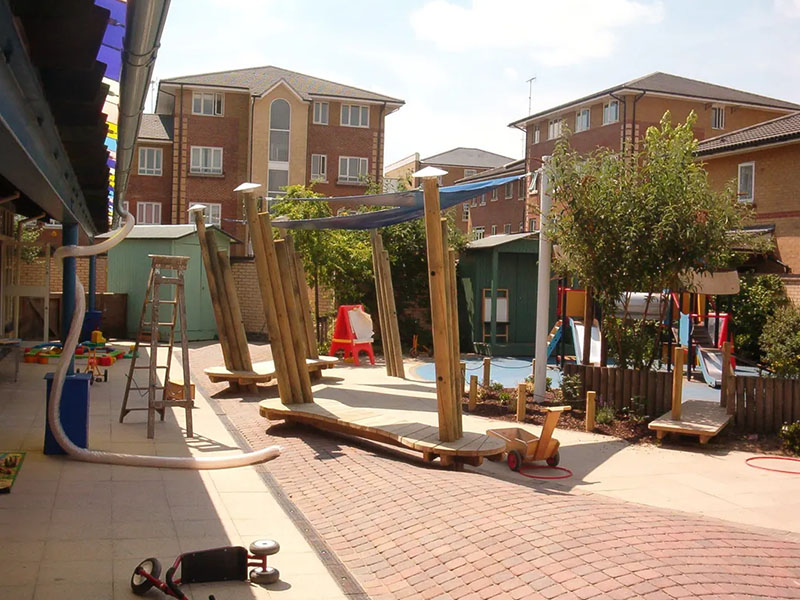
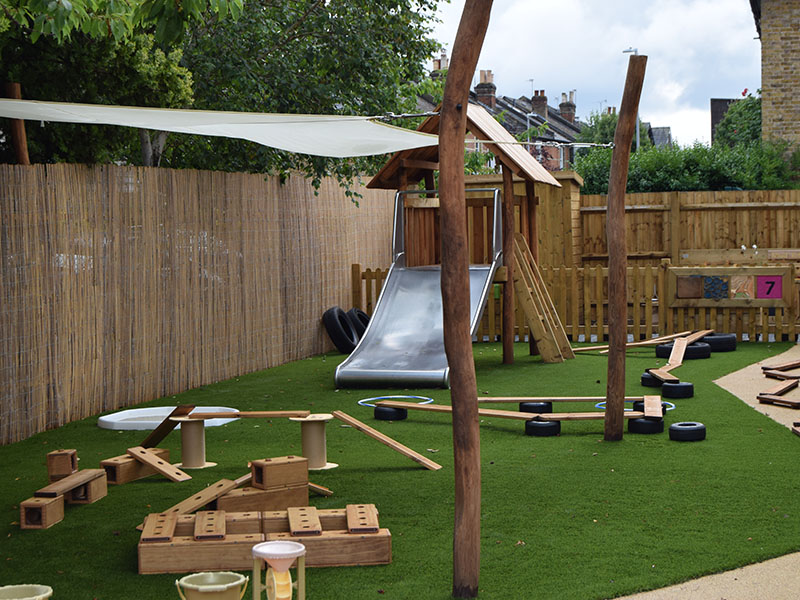
8. Sensory Swings
Sensory swings are captivating additions to an inclusive playground that offer a range of benefits, especially for children with sensory sensitivities or unique needs. Here’s why sensory swings are an invaluable part of an inclusive playground:
- Calming Motion:
Sensory swings, including nest swings, provide a soothing, back-and-forth motion that has a calming effect on overstimulated children. This gentle, rhythmic movement helps reduce anxiety, stress, and sensory overload. It offers a serene escape from the often-overwhelming sensory experiences of the playground. - Enhanced Balance:
Swinging on sensory swings challenges a child’s balance and spatial awareness. As they sway back and forth, children develop a better sense of equilibrium and coordination. This enhancement in balance is not only valuable for playground activities but also contributes to overall physical development. - Motor Skills Development:
Swinging on sensory swings engages core muscles and promotes gross motor skills development. It encourages children to use their body weight to control the swing’s movement, fostering muscle strength, control, and coordination. These skills are fundamental for everyday activities and physical fitness. - Deep Pressure Therapy:
Sensory swings, particularly fabric swings, provide deep pressure therapy. The cocoon-like embrace of the fabric swing exerts gentle, even pressure on a child’s body. This deep pressure has a calming effect on the nervous system, promoting relaxation, reducing sensory sensitivity, and enhancing self-regulation. - Vestibular System Strengthening:
Swinging activities stimulate the vestibular system, which is responsible for balance and spatial orientation. A well-developed vestibular system contributes to confident movement and spatial awareness. Swinging on sensory swings strengthens this crucial sensory system. - Inclusive Play:
Sensory swings are inclusive by design. They accommodate children of all abilities, including those with physical disabilities. Swinging is an activity that can be enjoyed by everyone, regardless of their mobility or sensory needs. This inclusivity fosters a sense of belonging and ensures that every child can partake in the joy of swinging. - Emotional Regulation:
The soothing, repetitive motion of sensory swings aids in emotional regulation. It provides a safe and comforting space for children to self-soothe and manage their emotions. When children feel overwhelmed or anxious, spending time on a sensory swing can help them regain a sense of calm and balance. - Sensory Exploration:
Sensory swings also encourage sensory exploration. They can be equipped with various sensory elements, such as tactile surfaces, hanging toys, or textured fabrics, which stimulate the senses and offer additional opportunities for engagement and learning.
In summary, sensory swings are dynamic and therapeutic elements of an inclusive playground. They provide a calming, sensory-rich experience that fosters balance, motor skills development, emotional regulation, and sensory exploration. Moreover, their inclusive design ensures that all children, regardless of their abilities, can enjoy the benefits of swinging and feel a sense of belonging in the playground community.
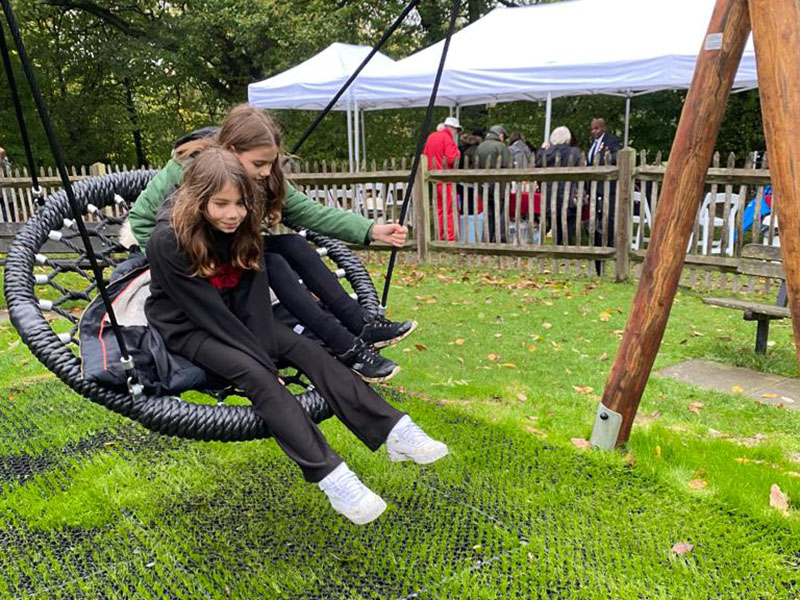
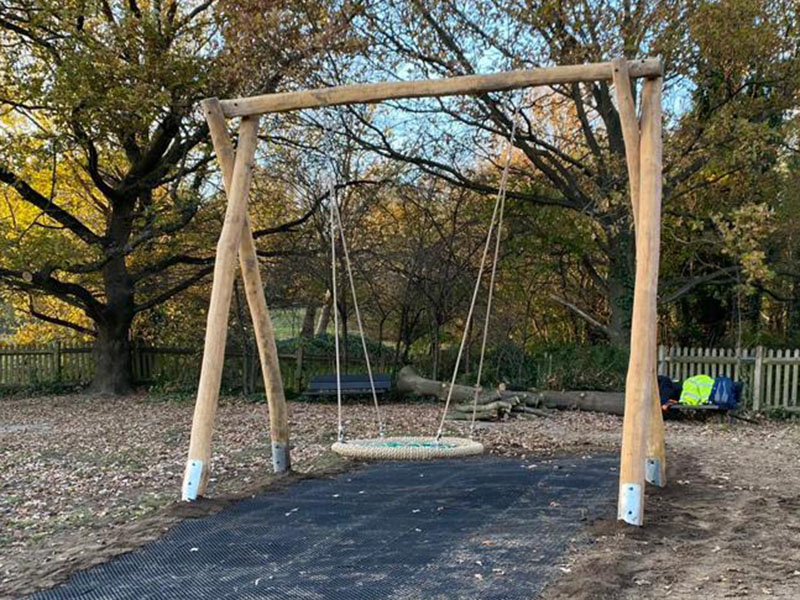
9. Tailored to Individual Needs
The heart of bespoke playgrounds lies in their extraordinary capacity to accommodate and celebrate the uniqueness of every child. Here’s why tailoring the playground environment to individual needs is the essence of inclusivity:
- Diversity of Needs:
Children are wonderfully diverse in their abilities, interests, and preferences. Some may have physical disabilities, while others may have sensory sensitivities or unique learning styles. Tailoring the playground acknowledges and respects this diversity, ensuring that every child’s specific needs are met. - Inclusivity and Belonging:
Inclusive playgrounds are built on the principle that every child deserves to belong and actively participate. By customizing the environment to individual needs, we create a welcoming space where no child feels left out. This fosters a sense of belonging and acceptance, essential for emotional well-being. - Holistic Development:
The goal of any playground is to support holistic development—physical, cognitive, emotional, and social growth. Tailoring the playground to individual needs ensures that each child receives the support and opportunities required for their unique developmental journey. - Optimizing Learning:
Play is a powerful form of learning. When the playground is designed to align with a child’s strengths and challenges, it becomes an extension of the classroom. Tailored environments provide opportunities for hands-on learning, skill-building, and personal growth that are specifically suited to each child. - Promoting Independence:
Tailored playgrounds empower children to explore and engage independently. They can choose activities that resonate with them and gradually build confidence in their abilities. This independence fosters self-reliance, decision-making, and a positive self-image. - Personalized Therapeutic Support:
Some children may require specialized therapeutic support. Tailored playgrounds can include elements such as sensory gardens, quiet zones, or sensory equipment that cater to these needs. These spaces provide a safe and controlled environment for therapeutic interventions. - Parent and Educator Collaboration:
Customizing the playground also encourages collaboration between parents, educators, and specialists. Together, they can identify the specific needs of each child and work collectively to create an environment that maximizes each child’s potential. - Long-Term Impact:
Tailored playgrounds not only benefit children during their school years but also have a lasting impact on their lives. The skills, confidence, and sense of inclusion nurtured in these environments extend into adulthood, promoting lifelong well-being and success.
In summary, tailoring the playground to individual needs is the essence of inclusivity and holistic development. It recognizes the uniqueness of every child and ensures that the environment is a place of acceptance, growth, and opportunity. A playground designed with individual needs in mind becomes a beacon of inclusivity, celebrating diversity and empowering children to thrive as their authentic selves.
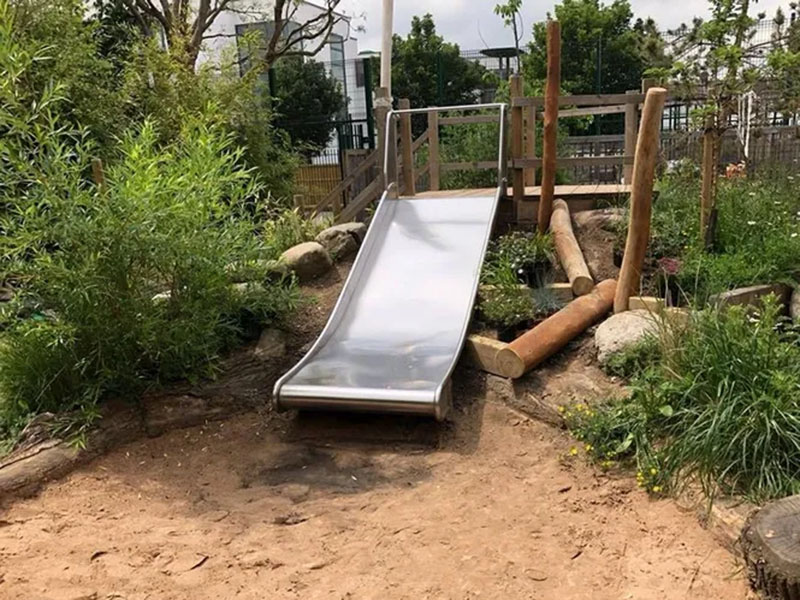
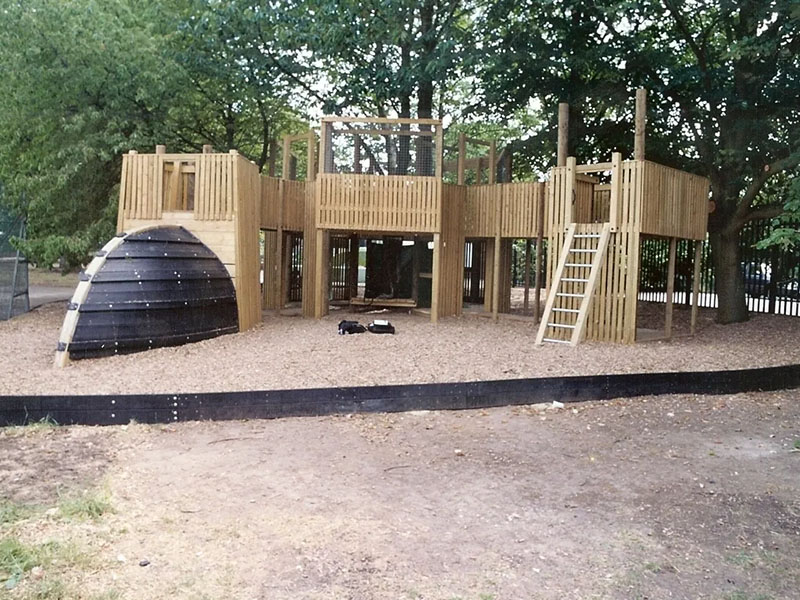
Autism Education Trust Newsletter Readers
We are proud to be associated with the Autism Education Trust, as we wholeheartedly champion the importance of play.
If you have visited this article as someone receiving the Autism Education Trust Newsletter, we’d like to invite you to subscribe to our newsletter and also offer you an exclusive 5% discount on our playground design, construction, installation and refurbishment services.
Simple click-thru and complete the form to be eligable for your discount.
